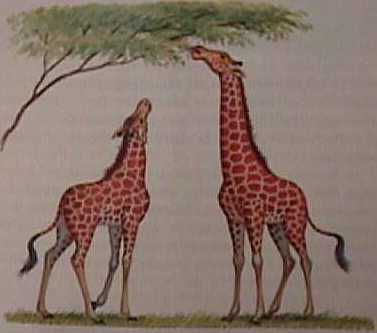
http://www.necsi.org/projects/evolution/lamarck/lamarck/lamarck_lamarck.html
Jean-Baptiste Lamarck (1744-1829)
was one of the first people to study
the overall evolutions of populations from
a scientific viewpoint.
He made many contributions to the understanding
of how groups of organisms related
to each other, but is most prominently
remembered for his incorrect idea of
the "inheritance of acquired traits."
In this theory, environmentally-induced
changes are passed on to offspring.
Example:
If a giraffe stretches its neck to reach
high leaves, then its offspring will
have longer necks. Or:
Blacksmiths have strong muscles through
heavy use -- Lamarckian theory implies that
children of blacksmiths would be born
with big muscles.
We know now that this idea is wrong and
that in particular the
causality is wrong -- as we shall
see.
But Lamarck's ideas did make an
important contribution to science in the
early 1800s, namely by suggesting that
organisms could change their shapes and
forms and functions over time.
Prior to Lamarck, it was thought that all
organisms presently had the shape they
always had and always will.

http://www.necsi.org/projects/evolution/lamarck/lamarck/lamarck_lamarck.html